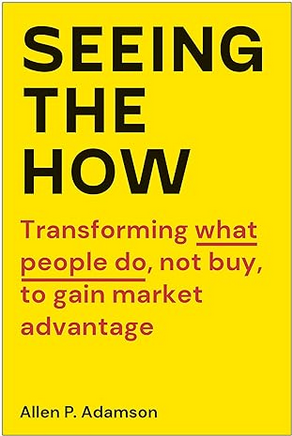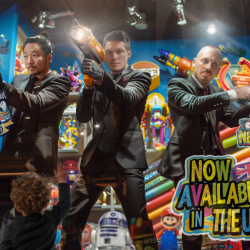This piece below is an excerpt from Allen P. Adamson’s book, Seeing the How: Transforming What People Do, Not Buy, To Gain Market Advantage (2023).
Asking the right questions, involves more than just, well, asking questions. Making sure the questions come from different areas and approaches is key.
Many years ago, I worked with Pizza Hut on its branding. Business was pretty good, and we were doing research on how to strengthen the brand further. We spoke with consumers in markets all across the country. We asked questions that probably won’t surprise you: How do you like Pizza Hut? Are you satisfied with the taste? The responses were equally banal: Yes, we enjoy Pizza Hut. It’s a nice place to eat and it tastes good. It’s usually hot; we go there often. And so on.
But there was one moderator who was particularly skilled at asking questions — the right questions. She didn’t ask people to tell her about their experiences by saying whether they were happy or unhappy because, it turns out, people don’t actually like being negative. They’ll say ‘fine’ before they say ‘bad.’ Instead, this moderator asked, ‘If Pizza Hut were to go out of business, what would you do?’ It was a huge ‘aha’ moment — because every respondent, without hesitation, said, ‘I’d go to Papa John’s’ or another well-known pizza alternative. No one expressed sadness about the absence of the Pizza Hut option. So, despite having expressed satisfaction with Pizza Hut, it was clear the feeling was devoid of a deep connection.
I recently had a conversation with Leslie Zane, founder and CEO of Triggers® Brand Consulting and a leading expert in unpacking human instinct, who started with the simple statement that ‘companies with high satisfaction rates can still be in decline.’ In other words, people can be satisfied without forming any attachment to a company or brand. Brand and product strength is not about whether or not a customer is content to go to you; it’s about whether or not you and your brand are an entrenched part of their lives.
It’s time to get your head in the game and get inside your customers’ heads
That’s the starting point: to understand and to look for opportunities. But before you jump in, stop. Take a walk outside, take some deep breaths, do whatever your version of breaking away is, of allowing things to settle in your head and get to a place where you can bring fresh eyes to the process.
Starting where Jerry Seinfeld did at the beginning of all of his bits, asking, ‘Have you ever wondered why people do the things they do the way they do them?’ is a form of fresh eyes that includes empathy, curiosity, and seeing clearly what others don’t. Once you’ve cleaned your glasses thus, you can see more sharply what is in front of you, around the corner, and down the road.
We need to look at the market through different lenses from different perspectives — because the best opportunities are not those in front of your nose. On this, LVMH’s group managing director, Antonio Belloni, has some gems of wisdom to offer.
‘I keep this picture in my mind of the established market, which I see like a table. All the existing players are sitting at the table and used to doing things in a certain way. They know how the game is played. They are optimising, not reinventing. But standing above the table with a different perspective are a number of startups. They have not been at this table, so they don’t know the “rules.”
These startups are in a position to look at lots of tables and can come up with a different perspective, a fresh mind. They can often find pain points or points of friction or other, often easier, ways of doing things that the players at the table don’t see or have learned to accept as just the way things are.’
Belloni offers a great, albeit counter-intuitive, hint: ‘It’s easier for the non-incumbent, for the people outside of the market, to see what needs to be seen. To think with that mentality, you have to cultivate doubt, much more than certainties, in your people.’
Featured image: Aman Uttam / Pexels


























